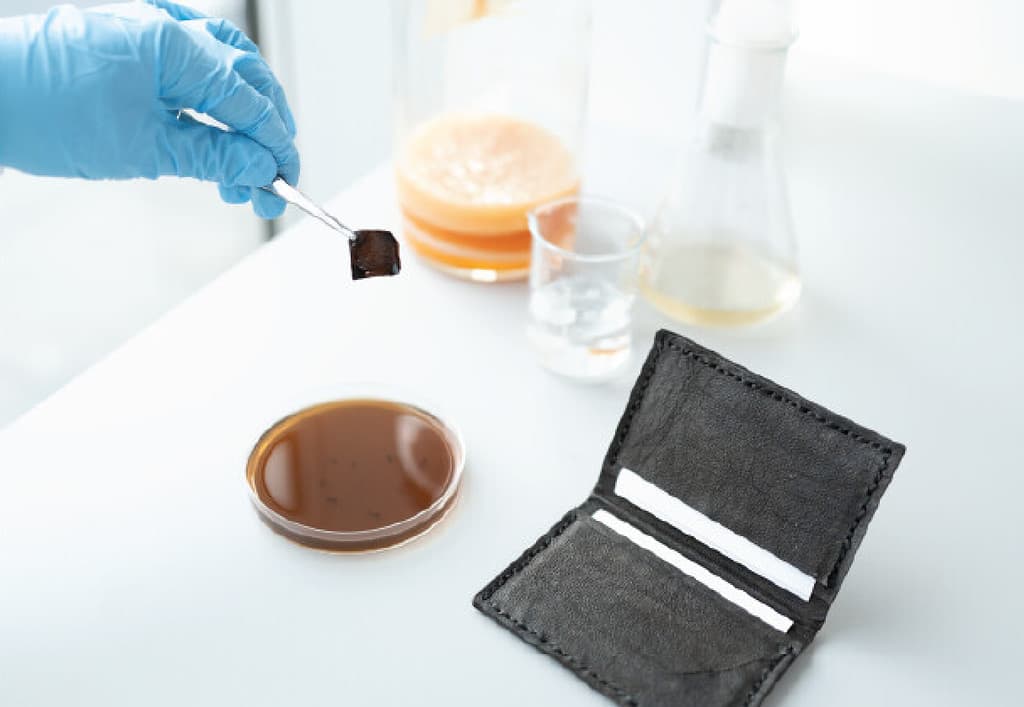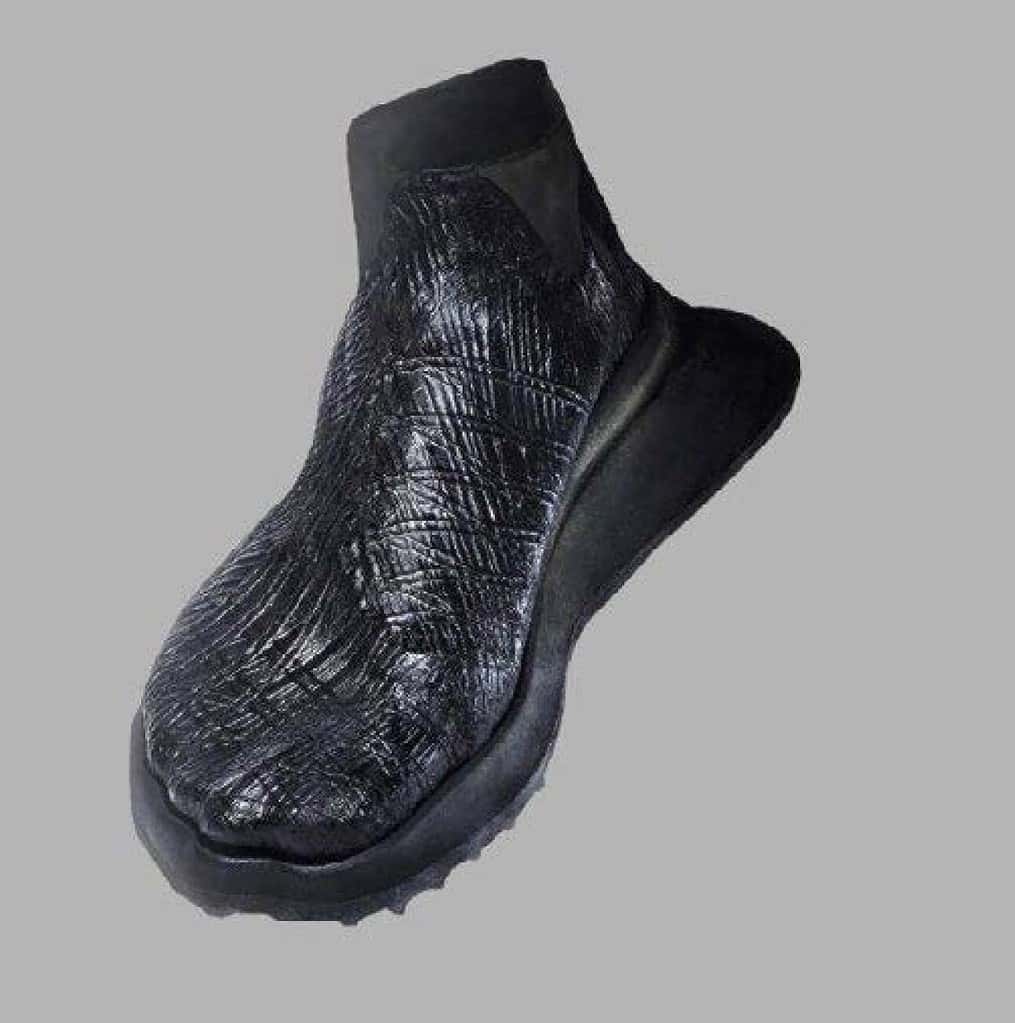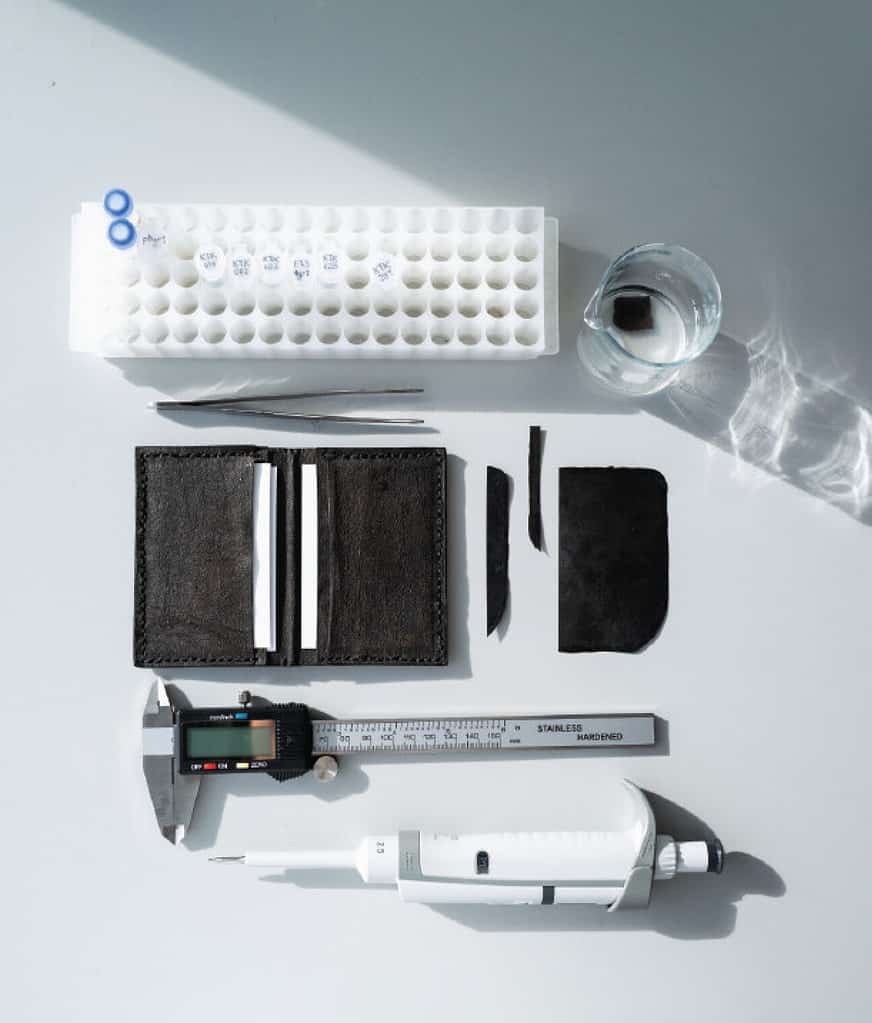In the quest for sustainable solutions within the fashion industry, scientists have made an important advancement. They’ve genetically engineered bacteria to produce self-pigmenting bacterial cellulose. Essentially, this offers a promising alternative to traditional dyeing methods fraught with environmental hazards.

Growing leather
Leather has a massive environmental impact and it’s not just the CO2 from cattle rearing. There’s also the use of chemicals in tanning processes, the water usage, and the air pollution associated with all of this. Synthetic alternatives do exist, but researchers have a different approach in mind: they want to use bacteria to grow leather. This isn’t the first study that has used bacteria to grow a leather alternative but, in this case, there’s an added bonus: the bacteria dyes itself.
Researchers started out by genetically modifying Komagataeibacter rhaeticus, the best-studied and the most efficient cellulose producer. They then changed its tyrosinase expression. Tyrosinase is an enzyme that limits the production of melanin, the polymer responsible for your eye, hair, and skin color. Herein is the key for the self-dyeing process.
The genetically-hijacked bacteria started producing sheets of cellulose — a strong, flexible, and malleable material that can be used in cosmetics. The same hijacking ensured that the bacteria produced a black pigment.
First, they grew a sheet of bacterial cellulose in a shoe-shaped vessel. It took 14 days of growth before the cellulose took the correct shoe shape. Then, only a gentle shaking was required to get the bacteria to produce the dark pigment. The team also created a wallet by growing two sheets and then sewing them together.

Moving into the real world
The researchers demonstrated the scalability of this technology by creating these prototypes. This shows that this is not just a gimmicky material — it can be used in practice.
Lead author Professor Tom Ellis, from Imperial College London’s Department of Bioengineering, said: “Inventing a new, faster way to produce sustainable, self-dyed leather alternatives is a major achievement for synthetic biology and sustainable fashion.
“Bacterial cellulose is inherently vegan, and its growth requires a tiny fraction of the carbon emissions, water, land use and time of farming cows for leather. Unlike plastic-based leather alternatives, bacterial cellulose can also be made without petrochemicals, and will biodegrade safely and non-toxically in the environment.”
It gets even more interesting. The team also showed that bacteria can be engineered to produce colors in response to blue light. Essentially, you can project a pattern or a logo onto the sheets, and the bacteria to produce the desired colors. This highlights the future potential for creating textiles with intricate patterns and colors directly grown into the fabric. It would remove the need for post-production processing.
All in all, researchers are confident that the product can be used in real life, in part thanks to the involvement of designers (not just biologists) in the research.

Fashion meets biology
Co-author Dr Kenneth Walker, who conducted the work at Imperial College London’s Department of Bioengineering and now works in industry, said, “Our technique works at large enough scales to create real-life products, as shown by our prototypes. From here, we can consider aesthetics as well as alternative shapes, patterns, textiles, and colours.
“The work also shows the impact that can happen when scientists and designers work together. As current and future users of new bacteria-grown textiles, designers have a key role in championing exciting new materials and giving expert feedback to improve form, function, and the switch to sustainable fashion.”
Now, the researchers are looking to deploy this type of product into the real world, working with the fashion industry. They’ve also received £2 million in funding to keep exploring the technology to to solve more of fashion’s problems, such as the use of toxic chromium in leather’s production lines.
Scaling this technology up for industrial application will require further engineering to adapt it to different bacterial strains and to meet industry standards for durability and color fastness. However, the potential environmental benefits present a compelling case for the continued development of this technology.
Professor Ellis concludes: “Microbes are already directly addressing many of the problems of animal and plastic-based leather, and we plan to get them ready to expand into new colours, materials and maybe patterns too.
“We look forward to working with the fashion industry to make the clothes we wear greener throughout the whole production line.”
Journal Reference: “Self-pigmenting textiles grown from cellulose-producing bacteria with engineered tyrosinase expression” by Walker et al., is published in Nature Biotechnology.









